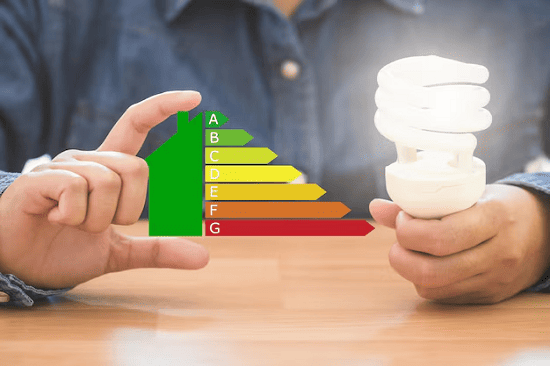Improved Energy Performance : 10%, 12.5%, 15%, 17.5%, 20%, 22.5%, 25%
Improved Energy Performance : 10%, 12.5%, 15%, 17.5%, 20%, 22.5%, 25%- The percentages you’ve provided (10%, 12.5%, 15%, 17.5%, 20%, 22.5%, 25%) can represent various types of improved energy performance depending on the context. Here are examples of potential types: 1. Building Energy Efficiency 2. Renewable Energy Integration 3. Industrial Process Optimization 4. Vehicle Fleet Efficiency 5. Energy Codes or Green Certifications Improvements aimed at achieving certifications (Deming Rating, ENERGY STAR, Passive House). What is Required Improved Energy Performance : 10%, 12.5%, 15%, 17.5%, 20%, 22.5%, 25% The Required Improved Energy Performance refers to incremental levels of energy efficiency improvements compared to a baseline or standard. These percentages (10%, 12.5%, 15%, 17.5%, 20%, 22.5%, 25%) often represent targets for energy savings in different contexts, such as building codes, green certifications, or performance incentives. Common Requirements for Achieving Improved Energy Performance Levels: 1. Baseline Definition 2. Strategies for Achieving Performance Improvements 3. Measurement and Verification 4. Certification or Standard-Specific Guidance Who is Required Improved Energy Performance : 10%, 12.5%, 15%, 17.5%, 20%, 22.5%, 25% The Required Improved Energy Performance levels (10%, 12.5%, 15%, 17.5%, 20%, 22.5%, 25%) are typically applicable to various stakeholders depending on the regulatory framework, industry standards, or certification programs. Below are examples of who might be required to meet these targets: 1. Building Developers and Owners 2. Government Agencies and Municipalities 3. Corporations and Industrial Facilities 4. Residential Developers and Homeowners 5. Design and Construction Teams 6. Utility Companies 7. Participants in Incentive Programs When is Required Improved Energy Performance : 10%, 12.5%, 15%, 17.5%, 20%, 22.5%, 25% The Required Improved Energy Performance levels of 10%, 12.5%, 15%, 17.5%, 20%, 22.5%, and 25% are typically applied in specific contexts and timelines depending on the following scenarios: 1. Regulatory Requirements 2. Green Certifications 3. Corporate or Institutional Goals 4. Retrofit and Renovation Projects 5. Energy Efficiency Incentives and Grants 6. Voluntary or Market-Driven Deadlines Where is Required Improved Energy Performance : 10%, 12.5%, 15%, 17.5%, 20%, 22.5%, 25% The Required Improved Energy Performance levels of 10%, 12.5%, 15%, 17.5%, 20%, 22.5%, and 25% are typically applied in various locations and contexts where energy efficiency standards, green certifications, or regulations are enforced. Here are examples of where these performance improvements might be required: 1. In Buildings and Construction 2. In Industrial and Manufacturing Facilities 3. For Renewable Energy and Infrastructure Projects 4. In Government Buildings 5. In Energy Efficiency Programs 6. In Certification Projects 7. In Regions with Carbon Reduction Goals How is Required Improved Energy Performance : 10%, 12.5%, 15%, 17.5%, 20%, 22.5%, 25% The Required Improved Energy Performance of 10%, 12.5%, 15%, 17.5%, 20%, 22.5%, and 25% is achieved through a combination of strategies, methodologies, and technologies, depending on the context. Here’s how it is implemented: 1. Energy Modeling and Benchmarking 2. Efficiency Strategies by Improvement Levels 3. Compliance with Standards and Codes 4. Incentive and Certification Frameworks 5. Monitoring and Verification (M&V) 6. Technology Integration 7. Behavioral and Operational Changes 8. Phased Approach Case Study on Improved Energy Performance : 10%, 12.5%, 15%, 17.5%, 20%, 22.5%, 25% Incremental Energy Performance Improvements in a Commercial Building Project Overview Implementation Strategies by Improvement Levels 1. 10% Improvement 2. 12.5% Improvement 3. 15% Improvement 4. 17.5% Improvement 5. 20% Improvement 6. 22.5% Improvement 7. 25% Improvement Key Challenges Outcomes and Benefits Lessons Learned White paper on Improved Energy Performance : 10%, 12.5%, 15%, 17.5%, 20%, 22.5%, 25% Achieving Incremental Energy Performance Improvements – 10% to 25% Executive Summary Energy performance improvements have become a cornerstone of global efforts to reduce greenhouse gas emissions, lower operational costs, and enhance building and industrial efficiency. This white paper outlines strategies, methodologies, and case studies to achieve incremental energy performance improvements at levels of 10%, 12.5%, 15%, 17.5%, 20%, 22.5%, and 25%. By adopting a phased and systematic approach, organizations can meet regulatory requirements, pursue sustainability goals, and unlock financial benefits. Introduction Energy efficiency is not only a cost-saving measure but also a critical component of global climate action. Whether driven by regulatory mandates, green certifications, or corporate sustainability goals, achieving incremental energy performance improvements requires careful planning and execution. This paper focuses on the processes and tools needed to meet specific performance targets while maintaining operational excellence. Key Concepts Implementation Strategies 1. Baseline and Benchmarking 2. Strategies by Improvement Levels 10% Improvement 12.5% Improvement 15% Improvement 17.5% Improvement 20% Improvement 22.5% Improvement 25% Improvement Case Study Project: Mixed-Use Commercial Office Building in San Francisco, California Results: Monitoring and Verification Challenges and Solutions Conclusion Achieving incremental energy performance improvements—from 10% to 25%—is both feasible and financially advantageous. By adopting a systematic, phased approach and leveraging available tools, organizations can meet regulatory requirements, enhance sustainability efforts, and realize significant cost savings. The key to success lies in planning, execution, and continuous improvement. References Industrial Application of Improved Energy Performance : 10%, 12.5%, 15%, 17.5%, 20%, 22.5%, 25% Courtesy: Morgan Lovell | Office Interior Design Specialist The industrial application of improved energy performance can result in significant energy savings, cost reductions, and environmental benefits. The percentages you provided (10%, 12.5%, 15%, 17.5%, 20%, 22.5%, 25%) can reflect incremental energy performance improvements. Here’s a breakdown of the potential benefits: 1. Energy Cost Savings 2. Carbon Emissions Reduction 3. Operational Efficiency 4. Competitive Advantage 5. Compliance and Incentives Example Applications by Sector ROI for Different Improvement Levels The return on investment (ROI) for energy performance improvements generally increases with the percentage improvement but depends on factors such as initial costs, operational scale, and utility rates. References







